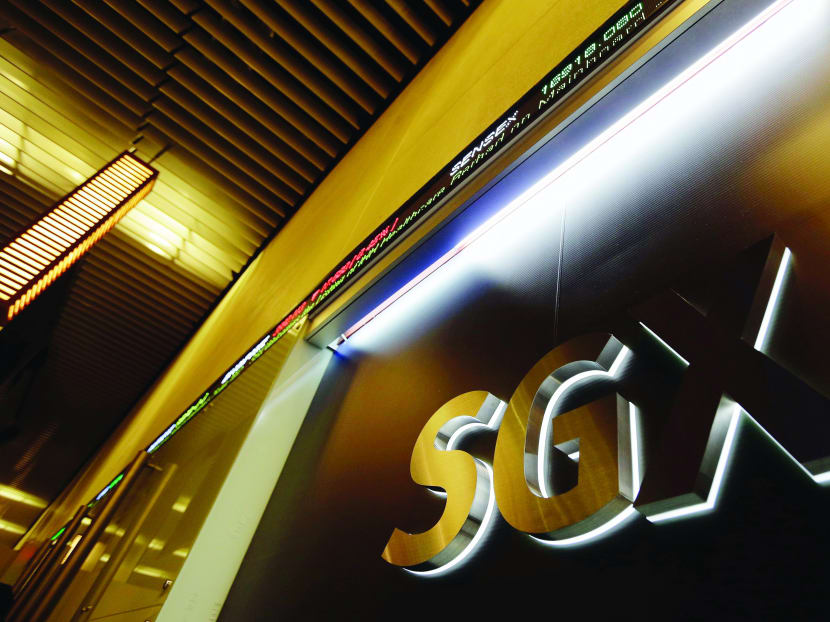Chaos as power fault shuts SGX for 3 hours
SINGAPORE — In what may be the Singapore Exchange’s largest disruption to date, a power supply malfunction forced South-east Asia’s biggest stock market to suspend trading for several hours yesterday, dealing a blow to its reputation and denting efforts to restore confidence and improve trading volume after last year’s penny stock crash.

Reuters file photo
SINGAPORE — In what may be the Singapore Exchange’s largest disruption to date, a power supply malfunction forced South-east Asia’s biggest stock market to suspend trading for several hours yesterday, dealing a blow to its reputation and denting efforts to restore confidence and improve trading volume after last year’s penny stock crash.
Market participants were disconnected at 2.18pm, after which the SGX declared a formal trading halt at 2.51pm. The securities market reopened at 5.15pm, with trading extended for the required minimum of 30 minutes of continuous trading. The derivatives market reopened at 7pm.
Initial investigations show the disruption was caused by “multiple power-supply issues, affecting the SGX’s hardware providing market participants connectivity”, the bourse said. “The outage did not arise from a cyberattack.”
“We apologise for today’s outage and the inconvenience caused to market participants. We are investigating the root cause of the disruption,” said SGX chief operations and technology officer Tim Utama.
The breakdown puts a dent into the SGX’s uphill battle to win back investors, after a slump in share prices of three commodity firms wiped out S$8.6 billion in market value over three days in October last year.
The exchange has introduced several initiatives to improve volumes, including the introduction of a smaller board lot size from Jan 19 next year and a cut to clearing fees and incentives for brokers to act as market makers, but these moves have yet to make a noticeable impact on liquidity.
Data released by the SGX only hours before the disruption yesterday showed its securities average daily value was 7 per cent lower year-on-year in October, representing the 13th consecutive month of decline. The SGX last month also posted its fourth consecutive quarterly profit decline.
“As far as I can remember, I can’t recall a technical disruption as big as this in Singapore or even the region. In this case, as there’s usually a bump in trading volume towards closing, we may be looking at roughly a 6 to 7 per cent decrease in turnover on the basisof daily volume,” said CMC Markets analyst Desmond Chua.
IG Markets’ Mr Ryan Huang said: “For investors looking to close their position, this outage could potentially put them in a more vulnerable position. During the outage, there could be negative macroeconomic developments and investors might find themselves having to execute their position in worse market sentiments.” He had received several calls from clients voicing such concerns.
“But the real impact is reputational. The SGX has been trying to improve retail trading volume, but outages like this may spook small investors, who tend to move in and out of the market rapidly — it will not do the SGX any favours.”
Brokers and remisiers whom TODAY spoke to expressed unhappiness with the situation, saying the SGX could have done better communicating with them. “No one knew what to do or how to proceed as nobody knew whether the trade they had put in the queue had remained (there),” said Mr Jimmy Ho, president of the Society of Remisiers in Singapore, which represents dealers who work entirely on commission.
“Even during the extension, there was a lack of clarity on whether the trades had been cancelled or remained in queue. Thirty minutes is a short time to check that and to contact our clients to check whether they’re still keen to proceed with the trade. It was quite messy because there was a lot of ambiguity.”
Questions were also raised over the soundness of the SGX’s infrastructure and backup system. “The reputation of the SGX is at stake. It’s now a dry market and if the system can’t handle it, what happens when the market is active?” said Mr Ho.
Added Voyage Research CEO RogerTan: “Given that the SGX has been aggressively spending to build a state-of-the-art system, this disruption will cast a doubt over the quality of the systems purchased.”
Mr Chua concurred, saying: “I’m very interested to see why the backup systems — which every major bourse should have — did not kick in at the SGX yesterday.”
Yesterday’s outage is the second major incident for the SGX this year, following a computer breakdown in April that caused its derivatives trading to be halted for about three hours.
“These things shouldn’t happen if the SGX intends to become a world-class exchange,” said a broker who wanted to be known as Marc. He added that technical problems still persisted after trading resumed yesterday, but he did not suffer any major loss of fee income “as trading volume was already low”.
Commenting on the incident, Securities Investors Association (Singapore) president and CEO David Gerald said the SGX had to ensure such large-scale disruptions do not happen again, adding that it was up to the MAS to penalise the exchange if necessary.








